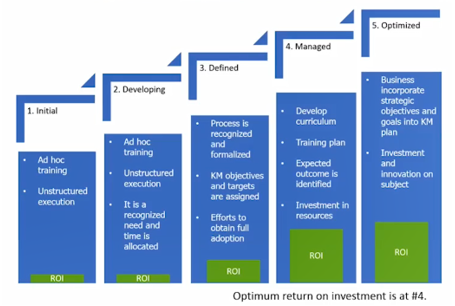2020 AFPM Summit: Increasing ROI with a robust knowledge management program
Increasing ROI with a robust knowledge management program
LEE NICHOLS, Editor-in-Chief/Associate Publisher, Hydrocarbon Processing
Implementing a knowledge management program can have a dramatic effect on an organization's bottom line. Juan Hurtado, Marketing Manager at BASF, discussed workforce training and knowledge retention in support of this idea at the 2020 AFPM virtual Summit on Tuesday.
The value of knowledge management was demonstrated through three case studies. These examples detailed the return on investment (ROI) that Chevron, Schlumberger and Shell received by instituting an organizational knowledge management program. The companies created several target value propositions, including reduced operating costs; improving operational excellence and safety; creating a single, global company; and reducing cycle times, among others.
The different approaches taken—creating a community of practice, facilitating the transfer of best practices, instituting new ways of working, realizing better content management, etc.—resulted in significant ROI for the three organizations. For example, with a total investment of $2 MM, Chevron was able to reduce operating costs by $2 B; of the total savings, $670 MM came from best practices. Furthermore, both Schlumberger and Shell witnessed approximately $200 MM in cost savings from investments in knowledge management initiatives.
Industry outlook on knowledge management. Hurtado also presented the results of an industry survey on knowledge management conducted by BASF. One major challenge within the industry is employee turnover. "Today, employees transition jobs twice as fast as they did 10 years ago," Hurtado noted. "However, with a solid knowledge management system, organizations are still able to train their employees to meet business objectives while managing the challenges in this new environment."
This knowledge transfer is completed through preferred training methods, such as internal one-on-one subject matter expert (SMEs) sessions; external training courses via equipment manufacturers, licensors, etc.; paid training sessions outside of the organization; and shadowing employees that have recently been in the same position or job scope. These techniques not only help an organization train new employees for different positions but also help retain workers.
What components comprise a strong knowledge management session? "The two pillars that make a strong knowledge management process are information management and knowledge sharing," Hurtado acknowledged. "These pillars support people, process and technology within an organization to strive for operational excellence."
Information management comprises three aspects—process, document and data management. "It is about having the right information that explains and details what information needs to be collected and disseminated throughout the organization," he said. Examples of information management are processes/procedures, commercial terms, forms, articles/publications, and third-party training documents, among others. However, information management falls short unless the organization has a way of sharing that knowledge across the organization. This is where knowledge sharing comes into play.
Knowledge sharing involves three techniques—capture, transfer and retention. Examples of knowledge sharing include creating communities, using software to share data/knowledge (e.g., Microsoft Teams, SharePoint), building an innovation portal, and disseminating lessons learned or market/technical presentations.
Stages of knowledge management. Depending on the needs of an organization, different steps will be taken to create a knowledge management network. Five stages of knowledge management process maturity (FIG. 1) are in practice.

FIG. 1 Five stages of knowledge management process maturity.
"Depending on a company's goals, any of the five steps make sense," Hurtado said. "The point is to identify which situations and what objectives an organization needs to put more emphasis on." The five steps—ranging from simple needs that must be addressed to an optimized corporate strategy involving investment and innovation of knowledge management programs—provide a roadmap for organizations to develop a robust and optimal knowledge management process. As shown in FIG. 1, ROI is increased as the company's knowledge management process matures.
Instituting a knowledge sharing system within an organization can have dramatic effects, including a more knowledgeable workforce, streamlined operations, better worker retention, improved training programs and much more.






Comments